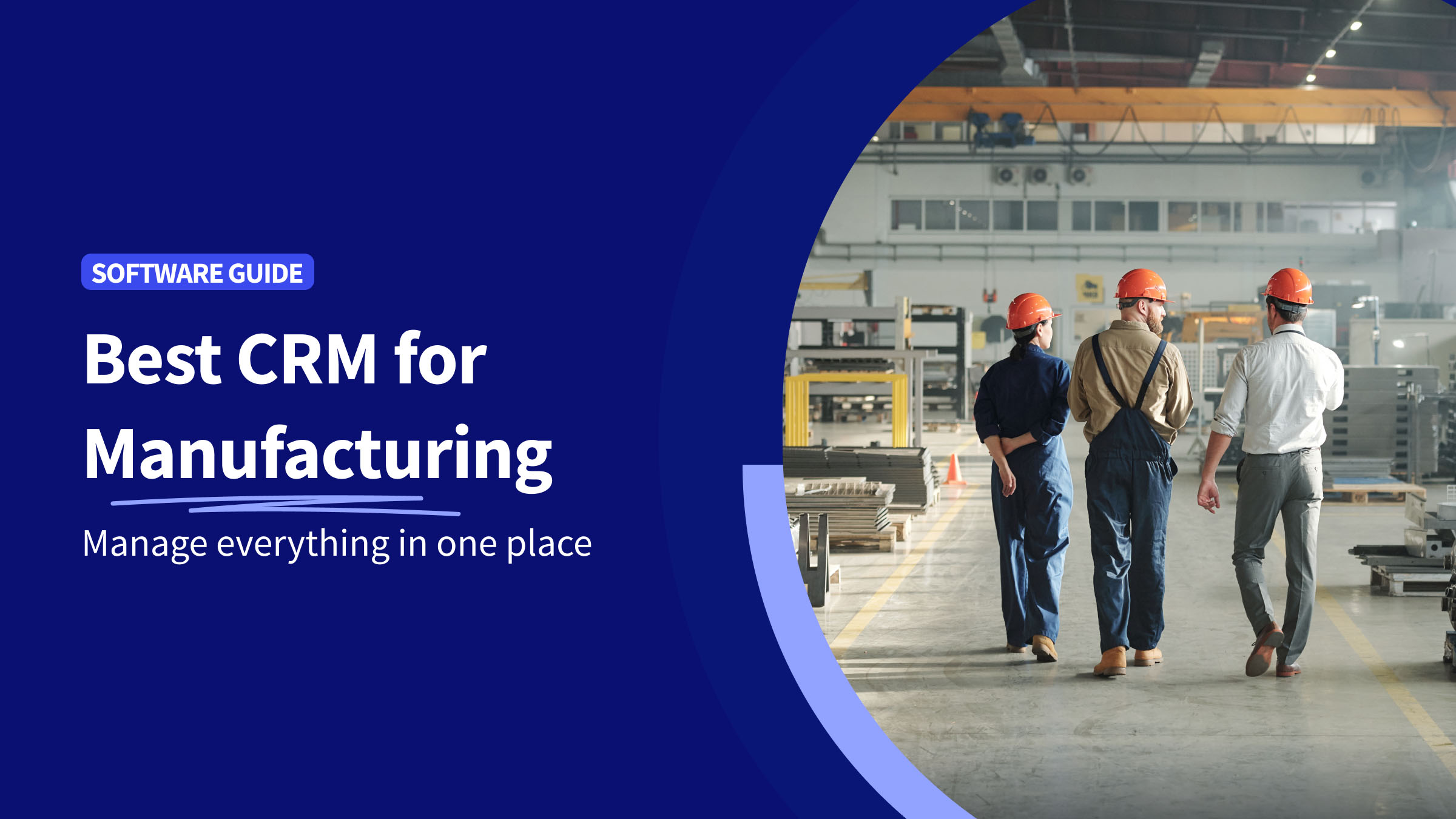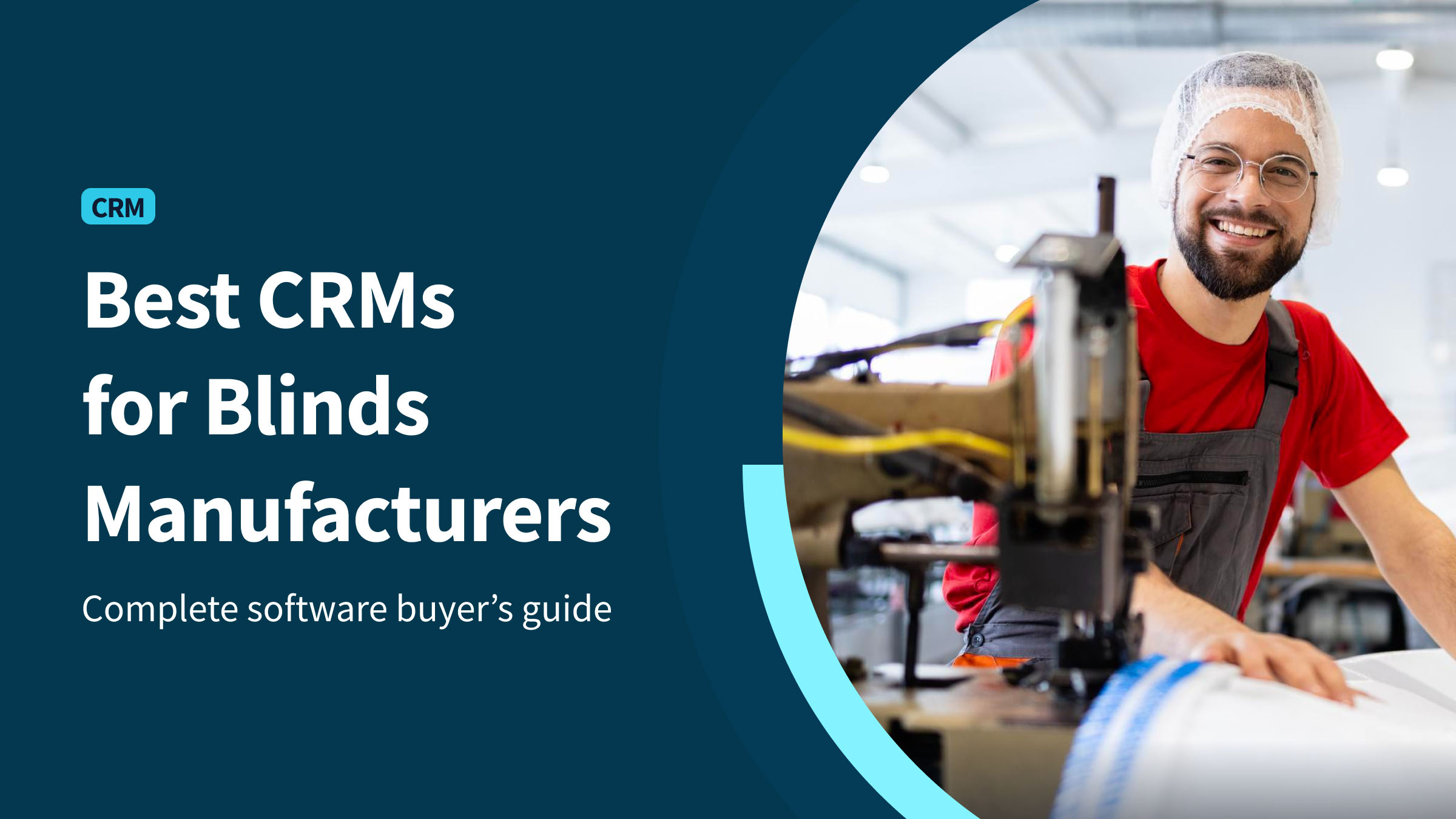You run a small manufacturing company. The business is profitable but sales are coming from repeat customers—and you want to grow. You know you need to be more visible to potential new clients and help your sales team drive qualified leads.
How can you develop a manufacturing lead generation strategy that will expand your marketing efforts and build your sales pipeline?
Read on to learn about how search engine optimization, trade shows, LinkedIn content, and other lead gen tactics can help to get you in front of the right people: the procurement specialists, engineers and other decision-makers in your industry.
And, once those marketing efforts have started to attract potential clients into your sales funnel, Method CRM can help you track all the leads. Method CRM offers a real-time two-way sync with QuickBooks for manufacturing and wholesale. Method’s automation makes it simple to get new prospects into your lead management software quickly so your manufacturing business can focus on growth.
What is lead generation for manufacturers?
Manufacturing lead generation refers to gathering basic contact information—such as a name, phone number, email address, and other data—that helps build a profile of a potential new customer.
It happens at the very start of the sales pipeline. For manufacturing companies, the sales cycle can be long, with multiple decision-makers involved, so it is critical to be highly targeted in your outreach from the beginning.
That means understanding who your ideal customer is, and optimizing your lead generation strategies to ensure you are reaching the right target audience.
Why lead generation can be challenging for manufacturing companies
For manufacturing businesses, reaching the right prospects and generating new leads can be a challenge due to the unique nature of the manufacturing industry, including:
- Complex sales processes: There are often a range of decision-makers and departments that need to sign off on purchase details and pricing, and it can be hard to know who to target at the start of the sales cycle.
- Niche markets and specialized products: Identifying the right prospects can also be difficult if your manufacturing business is highly specialized.
- Reliance on traditional marketing strategies: Cold calling, referrals and word-of-mouth can help you find new customers but some manufacturing businesses are too dependent on these tactics – which can limit opportunities.
- Limited digital presence: Having a website alone won’t bring in new leads. You need a digital marketing strategy, complete with SEO, optimized content, LinkedIn, email and more, to drive potential customers to your site.
7 strategies for manufacturing lead generation
What are the best ways to expand lead generation efforts for your manufacturing business? We have seven top tips.
1. Tap into your existing customer base
Customer acquisition is more expensive than customer retention. And, engaging existing customers is often easier—after all, they’ve already done business with you.
So ask your existing customers for feedback and testimonials. Word-of-mouth marketing is a powerful tactic, and displaying positive reviews can turn website visitors into leads.
2. Strengthen your website with SEO
Manufacturing buyers often search for technical specs, product capabilities, or solutions to production problems. For your website to appear in these searches, it must be optimized for user intent with industry-specific terms. Fortunately, search engine optimization is a low-budget yet effective investment that can give you great returns and qualified leads. Here are a few steps to begin with:
- Develop a list of keywords by researching the product terms and pain points that your potential customers are searching for online
- Optimize your product pages and content by incorporating those keywords
- Create blog content that targets leads and customers at different stages of their purchase journey
- Improve technical elements on your website (such as page load speed) to improve user experience
3. Use paid and PPC ads strategically
Strategically using paid and pay-per-click (PPC) ads can significantly boost lead generation efforts, especially when targeting industry-specific audiences. Google Ads are a powerful tool for capturing demand, particularly when they focus on high-intent, industry-relevant keywords. This ensures your business appears in front of potential leads actively searching for solutions in your niche, helping to drive quality traffic to your site.
LinkedIn Ads offer another effective avenue, particularly for B2B marketing. By targeting specific job titles or functions, such as engineers, operations managers, or procurement professionals, you can ensure your message reaches decision-makers within your desired market. Combining both platforms allows for a more comprehensive paid ad strategy that captures interest and nurtures leads at different stages of the buying journey.
4. Create lead magnets (also known as freebies)
Potential clients in the manufacturing industry are looking for helpful technical resources. On your website, you can offer a free downloadable e-book, ROI calculator, product comparison guide, or spec sheet, for instance, in exchange for the prospect’s contact information.
This is called “gated content”—in other words, content that can only be downloaded if the website visitor provides their name, email address, phone number, and other details that you request, and that provides you with a new lead.
5. Leverage LinkedIn for B2B outreach
LinkedIn offers an ideal space to build your professional network, connect with key prospects, and engage them directly through messaging. These features make it easier to reach engineers, procurement specialists, and other stakeholders who actively use the platform—and who influence purchasing decisions.
LinkedIn can also support your content marketing efforts by providing a platform to regularly share educational and technical content. Posting articles, updates and case studies helps position your company as an industry expert and keeps your brand top of mind with potential clients. To maximize visibility and attract the right audience, it’s important to optimize your company page with relevant industry keywords that your target market is likely to search for.
6. Participate in trade shows and events
As important as a digital marketing strategy is, meeting people in person should still be a key part of your lead gen plan because face-to-face still matters in the manufacturing sales cycle.
Participating in industry events, trade shows, and conferences can provide a platform for your business and get you in front of high-quality leads. Even if you aren’t delivering a speech or presentation, your attendance alone increases your visibility among decision-makers in the industry.
7. Nurture leads with email workflows
Use email marketing to keep in touch, and stay top-of-mind, with new leads, regardless of how they are generated. Method’s Email Campaigns app allows you to deliver engaging marketing emails that speak to prospective customers. It also makes contact list management simple with segmented email lists, filtering leads based on region, purchase intent, and more.
You can then share relevant promotions and updates with each group. Method CRM can also integrate with Mailchimp for an all-in-one email marketing platform.
Don’t let leads go cold: how to manage and track your leads
Once you’ve done the work and generated quality leads, it’s critical that you manage those leads. If you’re not careful, you could find yourself dealing with messy spreadsheets, doing manual follow-ups, and losing opportunities.
Method CRM lead tracking can help with:
- Automatically capturing leads from your website or ads
- Tracking communications and scheduling follow-ups
- Assigning tasks and stages in your sales pipeline
- Connecting directly with QuickBooks so sales and finance stay aligned.
Make every lead count
A steady influx of viable and high-quality leads makes manufacturing companies profitable. And, while they still have a role, traditional and in-person sales models alone are not enough, especially in today’s increasingly digital landscape.
Modern lead gen is digital, trackable, and scalable.
Want to stop leads from slipping through the cracks? See how Method helps manufacturers convert more leads with less effort.
Try it for free today.
Key takeaways
- SEO can help you reach engineers and procurement teams. By using industry-specific keywords and optimizing product pages and blog content, you can attract high-quality manufacturing leads searching online.
- Use LinkedIn to connect with operations managers, engineers, and supply chain professionals. Posting case studies, technical articles, and product demos can position your business as a trusted expert while building relationships with those who influence purchasing decisions.
- Face-to-face interaction at industry events, expos, and trade shows is still crucial for manufacturers. These venues are often where large buyers discover new vendors, evaluate capabilities, and make sourcing decisions, especially for custom or high-ticket components.
- Manufacturing buyers respond best to practical, technical resources. Use lead magnets like spec sheets, CAD files, product comparison charts, or ROI calculators to capture contact info. These tools speak directly to pain points in plant operations or procurement justification.
- You need a CRM built for long sales cycles and multi-stakeholder deals. Manufacturing sales are often long and complex. Method CRM integrates with tools like QuickBooks and helps you track interactions across departments, assign follow-ups, and avoid losing leads in a pipeline that may stretch over months.
Lead generation for manufacturing FAQs
How do manufacturers generate leads?
One of the best ways for manufacturers to generate leads is through digital marketing. Ranking high on search engines helps your company generate manufacturing sales leads by reaching potential customers when they’re actively searching. This improves the chances of converting those leads into customers.
What is the lead generation process?
The lead generation process involves attracting and moving customers through your sales pipeline. The goal is to create consumer interest in your specific products and services. Once you have a good set of leads (prospects), the next step is to turn them into paying customers by nurturing the relationship.
How can you improve sales lead generation?
You can take many steps to improve your lead and demand generation strategy, such as investing in SEO and paid advertisements or creating enticing content that brings visitors to your site. You can also network at events to generate interest and consistently adapt marketing efforts according to trends or consumer insights.
What is the best lead management software?
Method offers the most powerful lead management software for QuickBooks. Rather than cluttering your accounting data with potential sales, you can manage your leads in Method, then sync them to QuickBooks when they become paying customers.
And if you’re looking for the best CRMs specifically for manufacturing, we have compiled a wrap-up of the features to look for here. You can also find out how Method lets you customize user-friendly workflows to match how your production floor and sales team oversee lead management.






